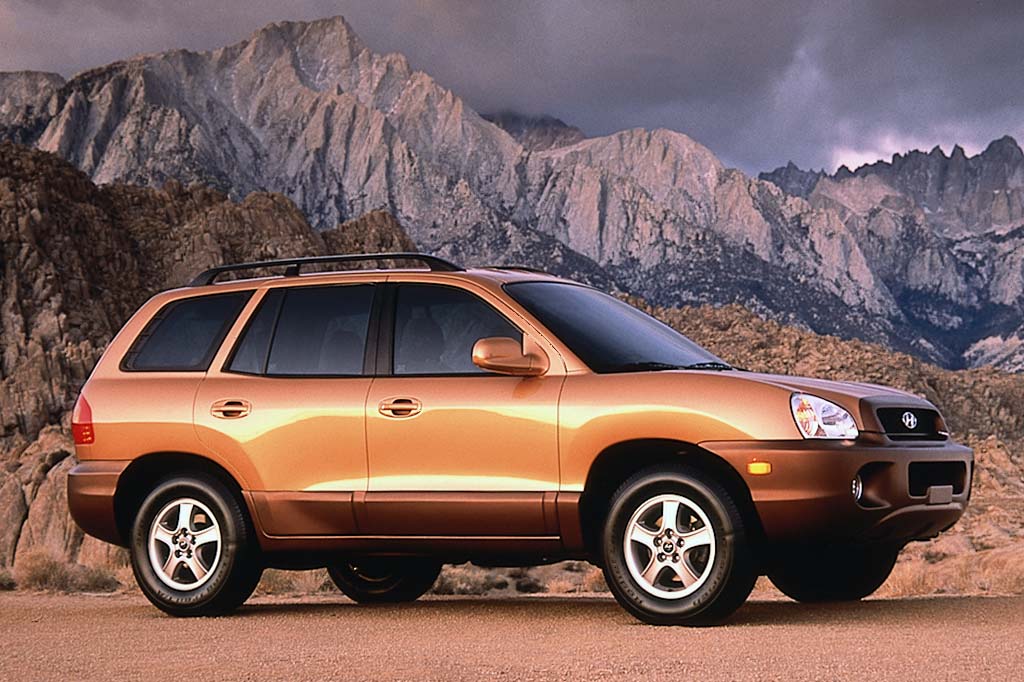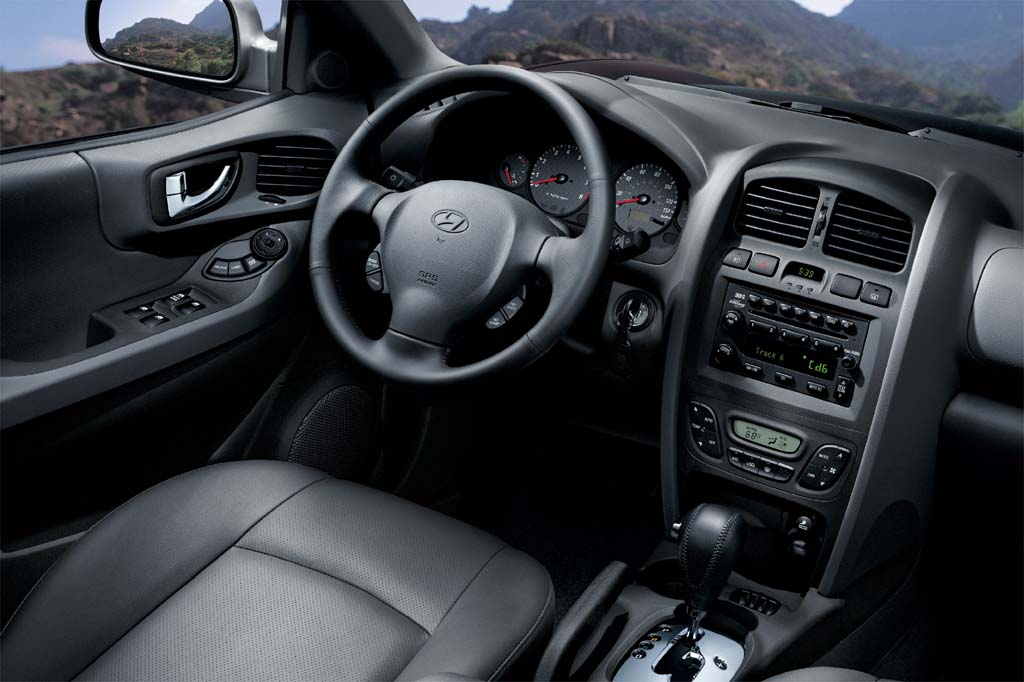| Compact SUV; Built in South Korea |
|
|
| Good condition price range: $2,500 – $10,000* |

2001 Hyudnai Santa Fe

2001 Hyundai Santa Fe interior

2002 Hyundai Santa Fe

2003 Hyundai Santa Fe

2003 Hyundai Santa Fe interior
| Pros: |
|
| Cons: |
|
Hyundai’s SUV needs more V6 muscle and better interior detailing, but Santa Fe is a high features-per-dollar vehicle with a generous 5-year/60,000-mile basic warranty and 10/100,000-mile powertrain coverage.
Overview
The first sport utility vehicle from South Korea’s leading automaker was a four-door, five-passenger wagon. Loosely based on the compact Sonata sedan’s platform, the Santa Fe was priced to compete with compact car-based SUVs such as the Honda CR-V, Subaru Forester, and new Ford Escape/Mazda Tribute. Hyundai’s version was wider and heavier, with the biggest cargo capacity in its class.
Santa Fes came with front-wheel drive or permanently engaged four-wheel drive. The base GL model used the Sonata sedan’s four-cylinder engine and manual transmission, or an optional automatic transmission with Hyundai’s Shiftronic manual shift gate. Automatic was the sole choice for the GL V6, the GLS, and the top-of-the-line LX, which used a version of the Sonata’s V6.
Not intended for severe off-roading, the Santa Fe’s 4WD system lacked low-range gearing. The system normally split power 60/40 front/rear, but could redirect it to the wheels with the greatest traction. Traction control that worked with both front-drive and 4WD was optional on the GLS and LX.
All Santa Fes had 16-inch alloy wheels, a separate-opening tailgate window, air conditioning, power windows, a CD stereo, and a 60/40 split-folding rear seat. A sensor could deactivate the front airbag if a small child or no occupant was detected. Front side airbags were not offered. Antilock brakes were optional, adding rear discs instead of drums on four-cylinder models. Leather upholstery was exclusive to the Santa Fe LX.
Yearly Updates
| 2002 Santa Fe Nothing noteworthy changed for 2002, except that the four-cylinder GL exchanged front-disc/rear-drum brakes for the four-wheel discs of the V6 models. The V6-powered GLS and top-line LX models came with front-wheel drive or all-wheel drive. Traction control was optional on the GLS, but standard on the LX. ABS was standard on the LX and optional for other models. The right-side dashboard airbag automatically shut off if a sensor detected a child or no occupant, but side airbags were not available. |
| 2003 Santa Fe Front side airbags became standard for 2003, and all Santa Fes now had all-disc brakes. New options included a six-disc CD changer and a Homelink remote control unit. |
| 2004 Santa Fe No new changes were made to the Santa Fe in 2004. |
| 2005 Santa Fe Hyundai gives Santa Fe a slight facelift for 2005 and drops its 4-cyl engine. The lineup now includes GLS and uplevel LX models, both with front-wheel drive or all-wheel drive without low-range gearing. |
| 2006 Santa Fe Santa Fe is unchanged. |
